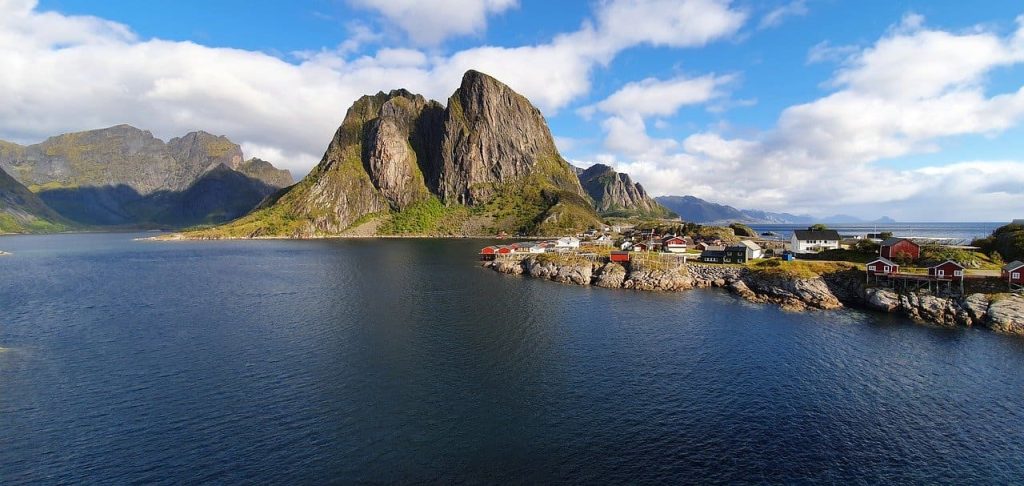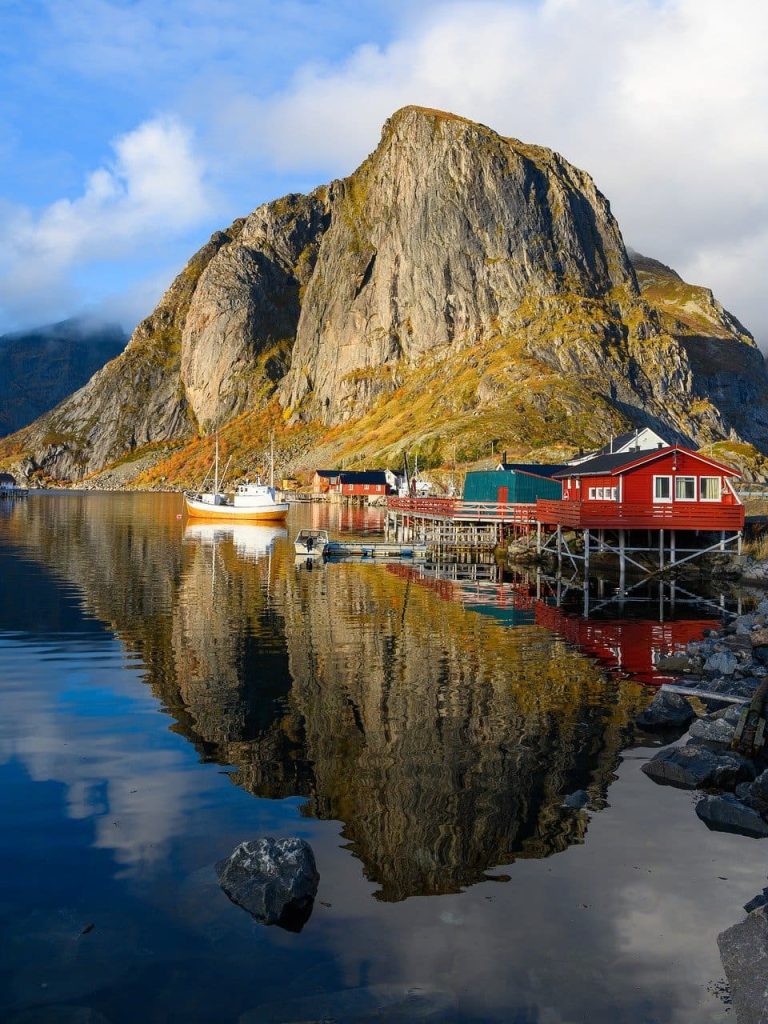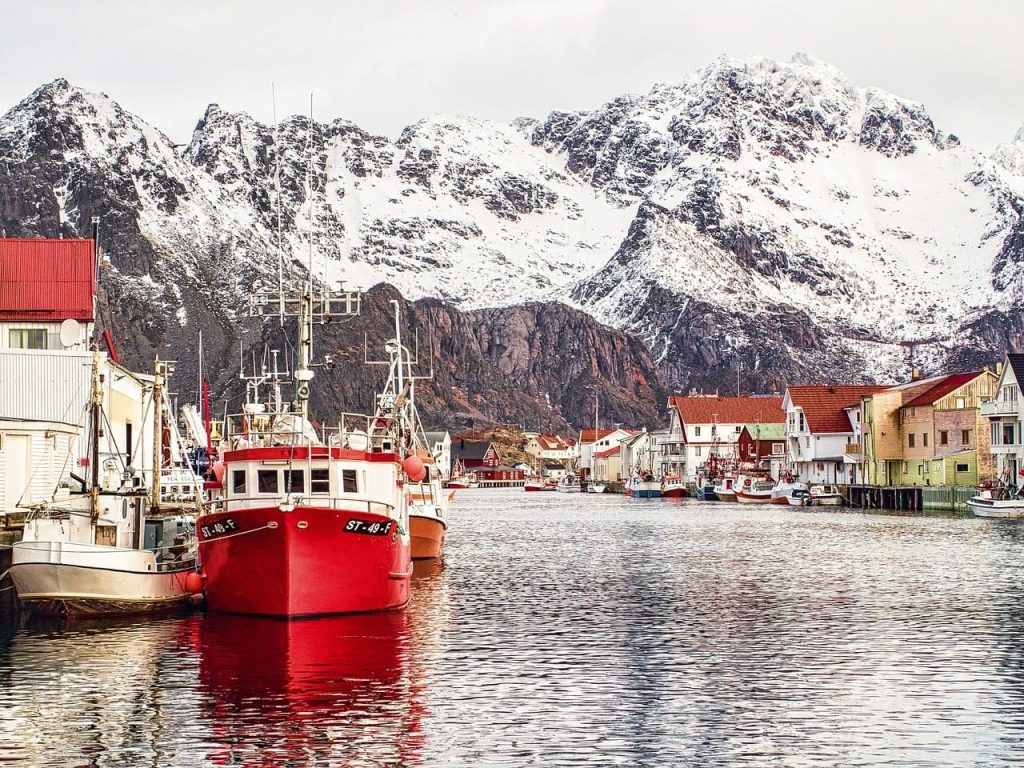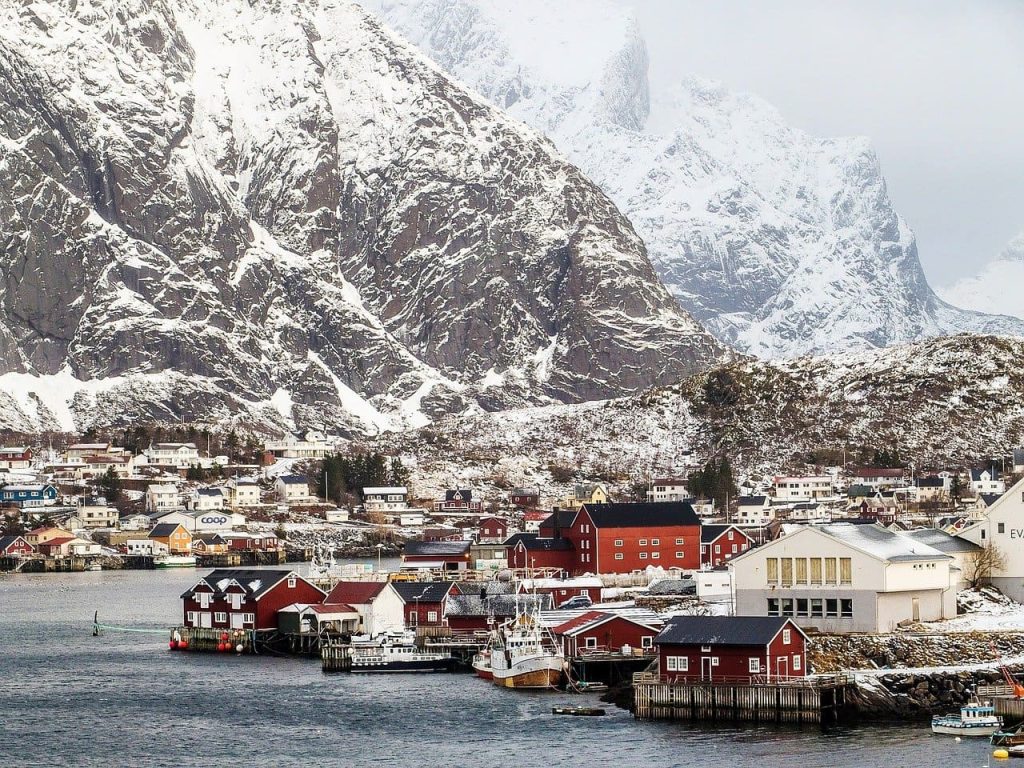
Discover the beautiful Lofoten Islands, which are recognized all over the globe for their breathtaking natural beauty. People, cuisine, art, and culture, on the other hand, will entice you to remain a bit longer.
Lofoten, an archipelago of islands of unparalleled beauty and charm in northern Norway.
Located beyond the Arctic Circle, they are the ideal place to see the Northern Lights in winter and the midnight sun in summer.
They are characterised by high mountains that drop into the sea, fjords and colourful fishing villages. The rorbu, the typical fisherman’s house, which usually overlooks the sea or the shores of a fjord or frozen lake, is a great place to stay.
The Sustainable Destination label has been given to the Lofoten archipelago, which recognizes locations that make persistent efforts to mitigate the negative impact of tourism in favor of its positive impact.
You will not be disappointed if you are seeking for unforgettable wilderness adventures. Hiking, skiing, fishing, RIB cruises, horseback riding, and scuba diving are all possible due to the diverse environments. The Lofoten archipelago is also home to one of the world’s most northerly surfing spots.
It has a strong Viking connection. The Lofotr Viking Museum in Borg has a replica of the largest Viking chieftain’s residence ever excavated, so you can observe how the Vikings lived. The house is 83 meters in length.


Lofoten has a substantially milder climate than other places of the world at the same latitude because of the Gulf Stream’s impact. The midnight sun is visible from late May to mid-July, while the northern lights are visible from September to mid-April.
People have traditionally been drawn to the area by fishing, and the region is recognized for its numerous little fishing communities. Try skrei, the Arctic cod, and stockfisch, the dried form of it, while staying in a rorbu, a traditional fishermen’s cabin.
The weather’s whims and the region’s magnificent light have drew many artists to the area in recent decades, as seen by the numerous art galleries and photo shows.
Lofoten fishing
Fishing in the Lofoten Islands is a centuries-old tradition. The breadth eventually grew to the point that it was relevant to those living outside of northern Norway. The famed seasonal fishery has really been of essential importance to the entire nation for the previous thousand years.
As a result, following the history of cod is a fascinating tour through the formation of Norway. A distinct image emerges from narrative, law, and court protocols, as well as historical account records and regulations going back to the 11th century. The cod provided us with the strength and resources we needed to build a church, government, royal power, governance, and, finally, a separate Storting. The cod allowed the country to be built stone by stone. People would not have lived in northern Norway if it hadn’t been for it. Bergen, Leiden, and Kristiansund were not. What about Oslo and the rest of the country’s south?
The Vikings would not have survived if it hadn’t been for the cod. Instead of swords, spears, and bows, their main weapon was cod, which the inhabitants near the coast had learned to dry in the absence of salt. As a commodity, but also as a ship supplier, it’s critical. Because they had nourishing food with endless date stamps in the stockfish, they were able to survive long travels to Greenland, Russia, and Europe’s far south. 500 years before Columbus, even to America.
Activities
The principal activity on the Lofoten Islands is still cod fishing. Every winter, fisherman from all around northern Norway gather to catch massive amounts of fish, which are subsequently salted and dried in the open air. Surprisingly, no birds come to dine on these plentiful and widely available food sources. The salt must be the culprit… Fishing has had to be tightly regulated in order for the fish to reproduce. After a few tough years, a balance appears to have been restored, due in large part to farmed fish.
Agriculture, although being a minority industry, is nevertheless present, allowing for the export of meat and dairy products.
Tourism is also growing rapidly, particularly during the summer. Climbing and trekking are very enjoyable on the islands. In the winter and spring, several people go surfing on the Unstad side and ski touring.
The scenery of the Lofoten Islands consistently wins them a spot on lists of the world’s most beautiful islands. There is also the option of witnessing the midnight sun from May 27 to July 17, as well as whale watching.
In the craggy scenery of the Lofoten Islands, the little harbour of Hamny is located. From January through March, fisherman follow skrei, commonly known as Atlantic cod, as they migrate from the Barents Sea to breed in the region. During the summer, however, the owners rent out their stilt houses, which are frequently painted in vivid colors, to the locals.
Lofoten main islands
The main islands of the archipelago are Austvåg, Vestvåg, Moskenes, Flakstad and Gims.
How to get to Lofoten
Flights
You can reach the Lofoten Islands by plane with the company Widorøe from Oslo or Bodø. Widorøe serves the airports of Svolvaer , Leknes and the small island of Røst.
Ferry
A conveniant way to reach Lofoten with a car. From Bodø the car ferry serves Moskenes, the island of Værøy and the island of Røst.
Express boat
Hurtigruten cruise sails from Bergen to Kirkenes in 11 days. It stops in Bodø before passing through the Lofoten Islands at Stamsund and Solvaer.
Are the Lofoten islands worth visiting?
Are they worth visiting? Absolutely! They offer many opportunities for outdoor activities such as fishing, hiking, kayaking and cycling. They also have plenty to see with lighthouses, waterfalls, glaciers and wildlife.
How do I get to Lofoten Islands?
You can get to Lofoten Islands by plane or boat. You can also take a ferry from the south of Norway up to Narvik which is located on the main island in the lofotens called Austvågøya.
Can you live in Lofoten Islands?
Yes, you can live here if that’s what you are wondering! The islands are home to around 27,000 people.


